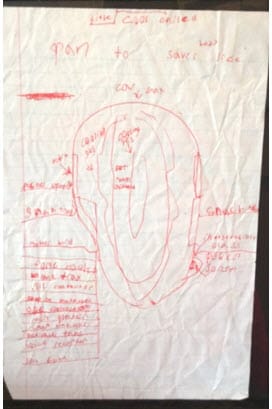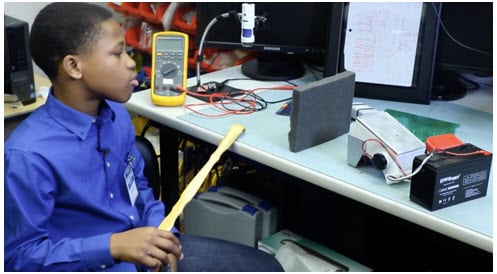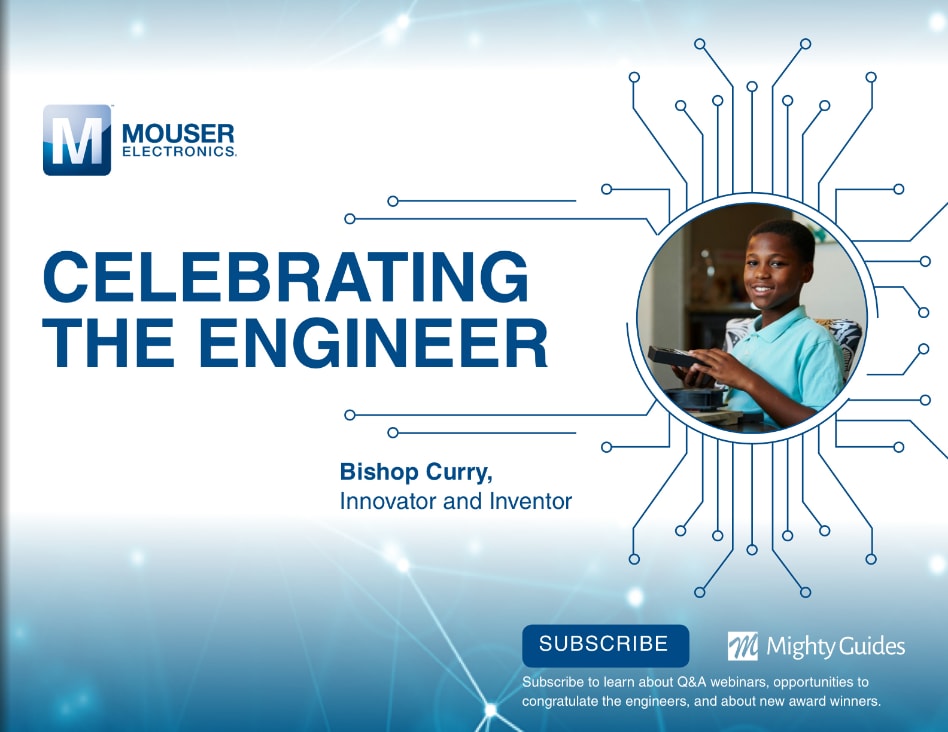Bishop Curry Interview

By Mouser Staff
Creative engineering requires clear vision and ideas that solve problems, as well as the skills to turn those ideas into reality. Though the path from idea to product is never an easy one for any inventor, it is helpful to know that there’s no single path to becoming a creative engineer. Creative engineers and inventors come from all walks of life.
Join Mouser Electronics in celebrating 13-year-old engineering prodigy Bishop Curry, who, even at his young age, is committed to seeing his ideas to fruition. He maintains a notebook overflowing with ideas for things he intends to build. Right now he is focused on building prototypes and seeking manufacturers for a device he invented that will prevent infants and children from being forgotten in a hot car or provide assistance to them in the event that it happens. Inspired by the tragic death of an infant in a family that lives close to him, and with the belief that this kind of accident is totally preventable, Bishop made a rough sketch of a device that can cool a baby and alert parents and authorities of a problem. His sketch includes a list of all the technologies needed to build a working model (Figure 1).

Figure 1: Bishop Curry's first sketch of Oasis. (Source: Bishop Curry)
In our interview with Bishop, he described how he came up with the idea, and, using a working prototype, showed us how his invention works.
Mouser: Mouser Electronics celebrates the engineer and I am here with a young engineer today. Would you introduce yourself?
Bishop: Hi, I’m Bishop Curry. I'm thirteen, and I go to Melissa Middle School.
Mouser: What grade are you in?
Bishop: I'm currently in seventh grade.
Mouser: That's great. And you are here today to show us a cool idea and solution that you came up with. Could you share a little bit about this great idea?
Bishop: I had an idea to save babies from dying in hot cars after a baby that lived not far from me died in a hot car. She was about two months old. I thought, this shouldn't happen to anybody. So, I took a pen and paper, and I made this drawing {pointing to a screen}, and now, after about three years, it’s gotten to what it is now {pointing to the working prototype}.
Mouser: So, you have an interesting name for this baby-saving device. What do you call it?
Bishop: I call it Oasis, because an oasis is cool. When I look at an oasis, it makes me think of relief.
Mouser: So Bishop, could you explain a little bit about what Oasis does and how it works?
Bishop: It’s connected to a power supply, and I have this piece of foam that represents the baby. When I put the foam here, the LIDAR sensors detect the foam, or the “baby.” While Oasis senses the baby, it talks to the GPS to see if the GPS is moving. If the GPS moves, that means the car is still moving, which means somebody is in the car driving, so there is no problem. Here {in the demo setup} the GPS is not moving, but as Oasis is sensing the baby, it has a two-minute delay. After its LIDAR sensors sense little movements like the baby's moving, Oasis realizes the movements are not just a purse thrown in the car seat. {Demo unit starts making loud fan noise.}

Figure 2: Bishop Curry demonstrating how Oasis works. (Source: Mouser)
Mouser: Now, Bishop, one of the most exciting things about your unit is it's able to cool the baby. Tell me a little bit about that.
Bishop: So, it’s passed the two-minute delay and Oasis starts to blow cold air. This part will start warming up {pointing to the top part of the demo unit}, and this part will start cooling down {pointing to the bottom part of the demo unit}. This is actually a refrigerator's air-blower and as soon as it gets colder, it'll start cooling down the baby. It’s in demo mode, so it’s only running at one-fourth speed, but in the actual mode, it goes at 100%. It sounds like a jet engine when it starts speeding up. I just now got a text message saying the baby's in the car. {Bishop shows his phone.} It says 11:23 a.m., so that's the time right now. Oasis will text you, and then it'll text the police. And when you take this part off, like taking out the baby {Bishop takes away the foam}, it turns off and all the systems will reset {blower stops blowing}.
Mouser: That's incredible. And so, when the emergency responders receive a text, they also get the GPS positions. Is that correct?
Bishop: Yes.
Mouser: Bishop, I see on your original drawing, you have so many technologies going on at the same time—all of them really high tech, like LIDAR sensors. You have refrigeration cooling going on, you have GPS, and you have transceivers to be able to send messages. How did you come up with all these ideas and technologies in one?
Bishop: So basically, we just came up with the technologies that would help out, because all we needed was the three components—a GPS, a sensor, and a fan. We picked the ones that would be best for it. We thought of LIDAR because it’s not too expensive. You need the GPS. We chose a special type of cooling unit, which would actually cool down the baby. When we start manufacturing, we’ll need to shrink the battery down but still have the correct power. The real battery is going to be much smaller because this thing isn't constantly on, and also the GPS doesn't use a lot of power.
Mouser: Can you talk to me about 3D printing you used to make your demo unit?
Bishop: This one {pointing to a plastic piece} was made with 3D printing that uses a laser and layers of plastic powder. The laser melts it, and then it lays down another layer and then uses the laser to melt that. That goes up until you have this hard 3D printed model. But on the other hand, this gray part was made the old-fashioned way, laying layers of plastic with a nozzle until you've got the 3D shape you've got here.

Figure 3: Image of the Oasis prototype. (Source: Mouser)
Mouser: I know you've patented your idea, and you’re trying to move it towards manufacturing and production. Can you tell us exactly where you are with that at this time?
Bishop: We're finding manufacturers. A company actually reached out to us, but we haven't heard back from them, so we're hoping other companies will reach out so we can put this into action.
Mouser: Are there some other exciting ideas you have that you are working on right now?
Bishop: I have a lot of really cool ideas like iron roads, which would have electric coils that would naturally heat up the road so you wouldn’t have to throw salt on the road. And there's this other thing that I have in the back of my inventions journal, which is so cool, and I can't wait to make it. It's called Planet Ball. It's a levitating magnetic sphere, and you can have your own ecosystem on it. You can plant grass seed and it will start spreading out. You can have rivers going through it. It will just levitate there. And then maybe you can add another ball to orbit it like a little Moon. I think it's pretty cool. It will be an awesome desk toy when I finally have the money to make it.
Mouser: Well, Bishop, it sounds like you have a lot of creative ideas. Besides going to school and making inventions, what type of other things do you enjoy doing?
Bishop: Well, I enjoy playing video games, and if I am bored, I will take a whole bunch of junk and make some stuff. We'll take pieces of wood and a saw and cut the wood until we make something pretty cool.
Mouser: Bishop, you've done tremendous things as a young engineer. What do you hope to do and be when you grow up?
Bishop: Well, I feel like I'm kind of already grown up, because I'm already doing what I wanted to do. But, I'm not sure what I want to be when I grow up, like job-wise. But I am pretty sure I will find out soon.
